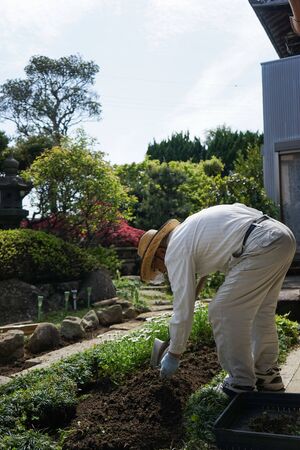Introduction to Smart DIY Gardening
Smart gardening is changing the way people grow plants in their backyards, balconies, and even indoors. With a little tech know-how and some creativity, you can build your own connected gardening tools that help you save time, use fewer resources, and get better results—all without spending a fortune. In this guide, we’ll explore what smart gardening is all about, why it’s becoming so popular in American homes, and what you’ll need to start your own DIY smart gardening projects.
What is Smart Gardening?
Smart gardening uses technology—like sensors, timers, and mobile apps—to make caring for plants easier and more efficient. Instead of guessing when your garden needs water or fertilizer, smart devices give you real-time data and automate tasks. This means healthier plants and less work for you.
Why Go DIY with Smart Gardening?
Buying ready-made smart gardening gadgets can be pricey. By building your own, you not only save money but also customize tools to fit your exact needs. Plus, it’s a fun project for families or anyone who loves tinkering with tech.
How Technology Makes Gardening Easier
| Traditional Gardening | Smart Gardening |
|---|---|
| Manual watering by schedule or guesswork | Automated watering based on soil moisture data |
| Checking plant health by sight alone | Sensors track temperature, light, humidity, and more |
| Handwritten notes on plant care | Mobile apps log data and send reminders |
| No way to monitor garden when away from home | Remote monitoring via phone or computer |
What You’ll Need to Get Started
You don’t have to be an engineer to start building your own smart garden gadgets. Here’s a quick overview of the basic supplies and tools:
| Category | Examples |
|---|---|
| Sensors | Soil moisture sensors, temperature sensors, light sensors |
| Microcontrollers & Boards | Arduino, Raspberry Pi, ESP8266 (Wi-Fi modules) |
| Connectivity Tools | Breadboards, jumper wires, Wi-Fi/Bluetooth adapters |
| Power Sources | Batteries, solar panels, USB power banks |
| Basic Tools & Supplies | Screwdrivers, soldering iron (optional), plastic enclosures, waterproof cases |
| Apps & Software (Optional) | Free mobile apps for remote monitoring or automation platforms like IFTTT or Home Assistant |
Ready to Start Your Smart Garden Journey?
This series will walk you through simple projects and tips for creating your own connected gardening tools at home—with easy-to-find supplies and step-by-step instructions. Whether you’re a beginner or a seasoned DIYer, you’ll find ways to make your garden smarter without breaking the bank.
2. Budget-Friendly Materials and Tools
Getting started with DIY smart gardening projects doesn’t have to break the bank. There are plenty of ways to find affordable components and tools right here in the U.S., especially if you know where to look or how to get creative with everyday items.
Where to Find Affordable Supplies
If youre looking for basic electronics, sensors, or microcontrollers (like Arduino or Raspberry Pi), check out these popular sources:
| Source | Best For | Tips |
|---|---|---|
| Local Hardware Stores (Home Depot, Lowe’s, Ace Hardware) | Wires, connectors, small hand tools, PVC pipes, weatherproof boxes | Ask staff for clearance or open-box deals; check seasonal sales |
| Online Marketplaces (Amazon, eBay, AliExpress) | Sensors, microcontrollers, bulk electronic parts | Look for multi-packs or kits for better value; read reviews for quality assurance |
| Electronics Stores (Micro Center, Frys Electronics) | Breadboards, resistors, specialty sensors | Check for student discounts or weekly specials |
| Thrift Stores & Yard Sales | Old electronics to repurpose (chargers, cables, cases) | Great for finding cheap enclosures or power adapters |
| Community Maker Spaces or Libraries | Borrowing tools, using 3D printers, workshops on basic electronics | Many offer free access to equipment with a membership or library card |
Repurposing Household Items for Smart Gardening
You don’t always need brand-new parts—many smart gardening components can be created from common household materials. Here are some ideas:
- Plastic Containers: Use food storage containers as weatherproof housings for sensors.
- Soda Bottles: Cut and use as mini greenhouses or protective covers for delicate electronics.
- Coffee Cans: Ideal for creating sensor mounts or protecting outdoor wiring from rain.
- Shoe Boxes: Great temporary cases when prototyping indoors.
- Old Phone Chargers: Repurpose them as power supplies for low-voltage devices like soil moisture sensors.
Sourcing Tips from Local Communities
If you’re on a tight budget, join local gardening clubs or online forums (like Facebook Marketplace or Craigslist). Members often share tips about where to find cheap supplies—and sometimes even give away surplus parts!
Quick Checklist: What You Might Need
- Screwdrivers and pliers (for assembly)
- Duct tape and zip ties (for mounting and weatherproofing)
- Breadboards and jumper wires (for simple circuits)
- PVC piping (for custom frames or supports)
- Sensors: temperature, humidity, soil moisture (based on your project)
- A microcontroller board (Arduino is a popular choice for beginners)
- A plastic enclosure or waterproof box (to protect sensitive parts outdoors)
This approach will help you build connected gardening tools without spending a fortune—plus, it’s fun to see what you can create from everyday items!

3. Building a Simple IoT Moisture Sensor
Why Build Your Own Moisture Sensor?
If you want to keep your plants healthy without spending a fortune, building a DIY soil moisture sensor is a great smart gardening project. With just a few affordable components, you can automate watering and ensure your garden gets the right amount of moisture—perfect for busy folks or anyone new to smart gardening.
What You’ll Need
| Item | Description | Approximate Cost (USD) |
|---|---|---|
| Arduino Uno or ESP8266 | Main microcontroller board | $5–$10 |
| Soil Moisture Sensor Probe | Senses soil water level | $2–$5 |
| Breadboard & Jumper Wires | For connecting components | $5 |
| USB Cable & Power Supply | Powers your circuit | $0–$5 |
| WiFi Connection (for ESP8266) | Enables remote monitoring | Free with home WiFi |
| Optional: Relay & Water Pump/Valve | For automatic watering system | $10–$20 |
Step-by-Step Guide to Building Your Sensor
Step 1: Connect the Hardware
– Plug the Arduino or ESP8266 into your breadboard.
– Attach the soil moisture sensor’s VCC and GND pins to the board’s 5V and GND.
– Connect the sensor’s data pin to one of the analog input pins on your microcontroller.
Step 2: Upload the Code
– Install the Arduino IDE on your computer.
– Use this simple code to read moisture levels:
int sensorValue = analogRead(A0);Serial.println(sensorValue);delay(1000); // Wait 1 second between readings– If using ESP8266, connect it to WiFi and use an online dashboard like Blynk or Adafruit IO for remote monitoring.
Step 3: Test Your Sensor in Soil
– Stick the probe into the soil of your favorite plant.
– Open the Serial Monitor in Arduino IDE to see real-time readings.
– Dry soil shows higher numbers, wet soil shows lower numbers. Adjust thresholds as needed for your plants.
Step 4: (Optional) Automate Watering
– Add a relay module and small water pump or valve.
– Program the microcontroller to turn on watering when soil gets too dry.
– This step lets you create a fully automated watering setup!
Troubleshooting Tips
- If readings aren’t changing, double-check wiring and make sure the sensor is pushed deep enough into the soil.
- If using WiFi features, confirm your network name and password are correct in your code.
- Protect electronics from outdoor weather—use waterproof enclosures if placing outdoors.
4. Creating a Connected Plant Monitoring System
Track Your Garden’s Health with DIY Tech
If you want to keep your plants happy and healthy, building your own Wi-Fi-enabled plant monitoring system is a fun and affordable project. This device will help you track sunlight, temperature, and humidity—all from your smartphone or computer. Plus, it’s easy to connect with other smart home systems like Google Home or Alexa for real-time updates.
What You’ll Need
| Item | Purpose | Where to Find |
|---|---|---|
| Microcontroller (like ESP8266 or ESP32) | Main processor with Wi-Fi capability | Amazon, Adafruit, local electronics stores |
| DHT22 or DHT11 Sensor | Measures temperature & humidity | Amazon, eBay, electronics shops |
| Photoresistor (LDR) | Senses sunlight levels | Electronics supply stores |
| Breadboard & Jumper Wires | Makes circuit assembly easier | Starter kits, online retailers |
| USB Power Supply or Battery Pack | Powers the system | Anywhere charging cables are sold |
| (Optional) Enclosure Box | Keeps everything protected outdoors | Hardware stores or 3D print your own! |
Step-by-Step Assembly Instructions
- Set Up the Microcontroller: Connect your ESP8266/ESP32 to your computer and install the Arduino IDE (free software for programming microcontrollers).
- Wire the Sensors:
- DHT22/11: Connect VCC to 3V or 5V on the board, GND to ground, and Data pin to a digital input pin (like D2).
- LDR (Photoresistor): One end goes to 3V/5V, the other connects to an analog input pin (like A0), with a resistor connecting from the analog pin to ground.
- Upload the Code: Use sample codes available on GitHub or Adafruit’s learning site. The code should connect your sensors to Wi-Fi and send data at regular intervals.
- Power It Up: Plug in your USB power source or battery pack.
- (Optional) Mount Everything: Place the device inside an enclosure box for weather protection before putting it near your plants.
- Monitor Remotely: Use free apps like Blynk or open-source dashboards like Home Assistant to visualize sensor data on your phone or web browser.
Troubleshooting Tips:
- If you don’t see any data, double-check wiring and Wi-Fi credentials in the code.
- If readings seem off, calibrate sensors using known temperature/humidity values indoors first.
Integrate with Your Smart Home System
You can take your project up a notch by connecting it with popular smart home platforms. For example:
- Google Home or Alexa: Use IFTTT (If This Then That) to set up alerts—for instance, if humidity drops below a certain level, get a notification.
- Home Assistant: Add your DIY monitor as a custom sensor for more advanced automations, like turning on fans when it gets too hot in your greenhouse.
This setup gives you real-time insight into what’s happening with your garden—without breaking the bank! Keep experimenting and make it fit your gardening needs.
5. Tips for Maintenance and Upgrades
Essential Maintenance for Your DIY Smart Gardening Tools
Keeping your homemade smart gardening gadgets in top shape is key to making them last and work well season after season. Here are some simple but important tips:
| Tool/Component | Maintenance Tip | How Often? |
|---|---|---|
| Sensors (moisture, temperature, light) | Wipe clean with a soft cloth to remove dirt and debris | Every 2 weeks |
| Batteries & Power Sources | Check battery charge or solar panel connections; replace or recharge as needed | Monthly |
| Wi-Fi or Bluetooth Modules | Ensure connections are secure and free of corrosion | Every 2 months |
| Cables & Wires | Look for signs of wear, fraying, or animal damage; repair or replace if necessary | Every season |
| Waterproof Housings/Enclosures | Inspect seals for leaks, especially after rainstorms or watering sessions | After heavy weather events |
Troubleshooting Common Problems
If something’s not working quite right with your DIY setup, don’t stress! Here are some common issues and quick fixes:
- No Data from Sensors: Check if the batteries need replacing or if the wires are loose.
- Poor Wireless Connection: Make sure your Wi-Fi signal reaches the garden area, or try moving your router closer.
- App Not Updating: Restart your device, and check if your app and firmware are up to date.
- Sensors Reading Incorrectly: Clean the sensor tips and ensure they’re placed properly in the soil.
- Device Won’t Turn On: Double-check power connections and look for blown fuses or tripped breakers in any AC-powered setups.
Upgrading Your Smart Gardening System
Your garden tech can grow just like your plants! Here are some fun ways to expand your system over time:
- Add more sensors—track humidity, pH, or even soil nutrients for more detailed data.
- Connect a smart irrigation controller so your garden waters itself based on real-time readings.
- Integrate with voice assistants like Alexa or Google Home for hands-free control.
- Create automated alerts on your phone when something needs attention (like low soil moisture).
- Add solar panels to make your setup more sustainable and less reliant on batteries.
- Share data with friends or gardening clubs using cloud services and gardening apps.
Helpful Resources for Ongoing Learning
If you want to keep improving your smart garden tools, check out online maker communities, YouTube tutorials, and local workshops at hardware stores or community centers. There’s always something new to learn!


